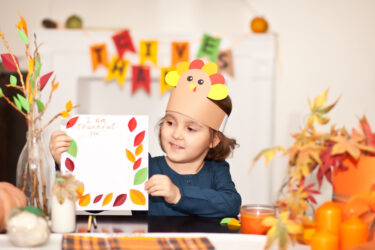When the sun sets, a special ritual takes place in households across Greater Cincinnati — the bedtime story. Reading aloud with your baby as he drifts off to sleep might feel like a chance to unwind and relax, but researchers have discovered that you might actually be setting his brain in motion — in a very good way!
A recent study conducted at the Reading and Literacy Discovery Center at Cincinnati Children’s Hospital Medical Center (CCHMC) examined the effects of reading on brain activity in preschoolers. After their parents completed a questionnaire about reading habits at home, children ages 3 – 5 years were placed in an fMRI machine while they listened to a story. The end result? Children who are read to more often at home showed greater activity in areas of the brain that are associated with semantic processing, a critical component for language and reading development.
“Nothing like this has been done before,” says John Hutton, M.D., who led the study. He explained that while brain activity in older children has been looked at, this is the first time doctors have evidence of reading’s influence on the brain activity of younger children.
In addition to activity in areas of the brain responsible for semantic processing, the study also showed activity in areas of the brain associated with visualization. In other words, the preschoolers who were read to more often at home showed more activity in the part of their brains that helped them to “see” the story they were listening to. “It means the imagination is working,” says Hutton, who adds that kids who are read to frequently may have an easier time imagining what they are reading once they progress to text-only books. “It reinforces the value of imagination and the early reading experience,” he says.
With follow-up studies in the works — including the effects of audio books and e-books — the takeaway for now is that it’s crucial for parents to read with their young children, and to read together often. Hutton suggests that parents keep three things in mind:
READ EVERY DAY!
- Frequency and consistency are key. Make reading together a cozy daily ritual, something you and your child can look forward to.
- Try “dialogic reading”: Ask your child questions about what you’re reading and have him tell you what’s happening in the pictures. Let him expand on and spin his own story about what he thinks will happen next.
- Know that brain development and activity from reading happens in the first few years of life. Start reading to your baby at infancy to expose him to language, but also to bond. Good, old-fashioned reading interaction between you and your child is important, and, as Hutton points out, “like an essential nutrient.”





